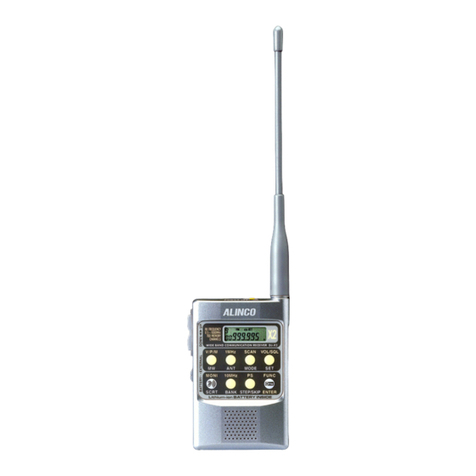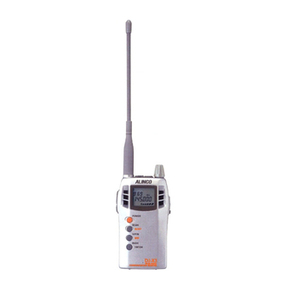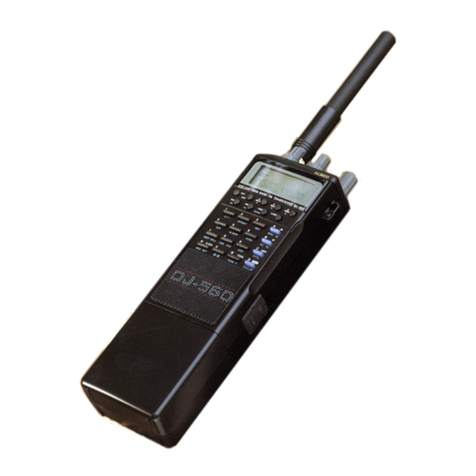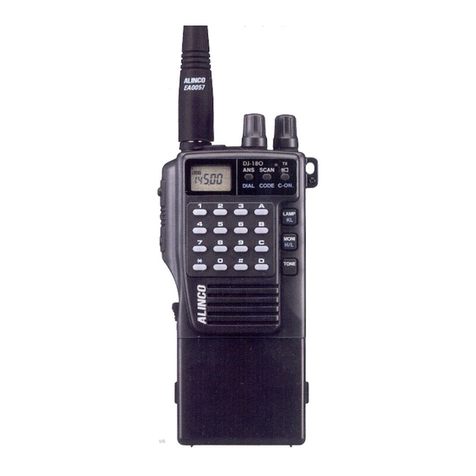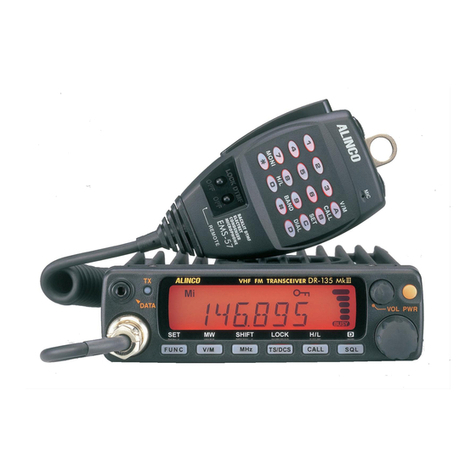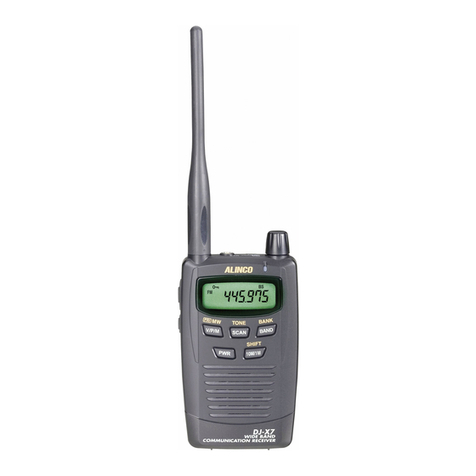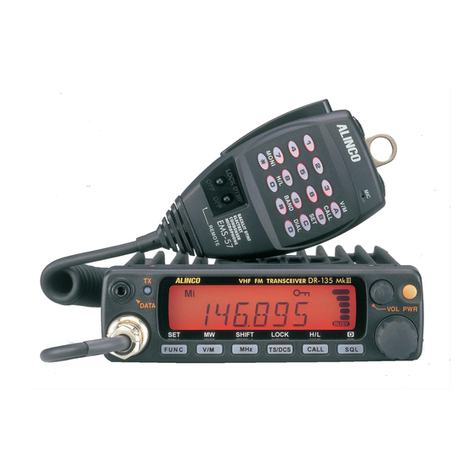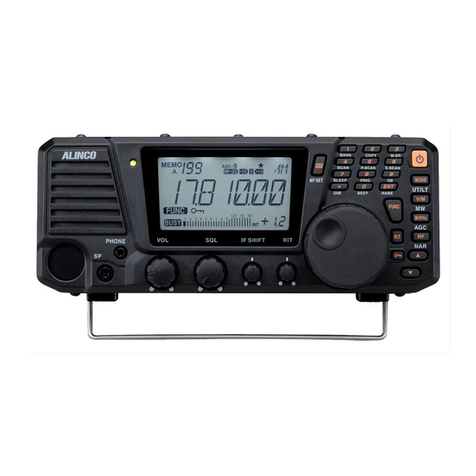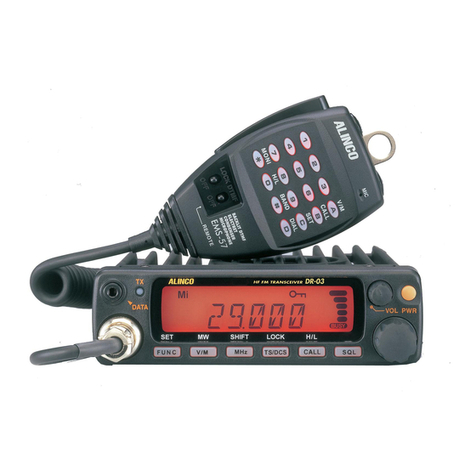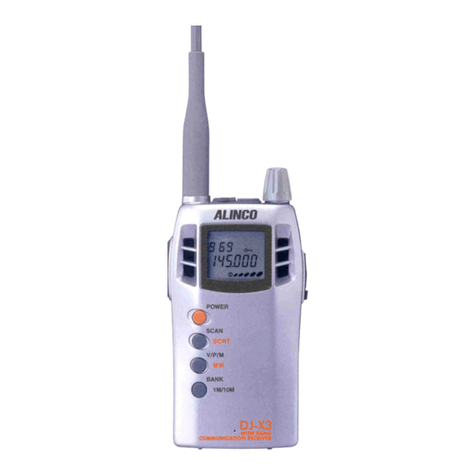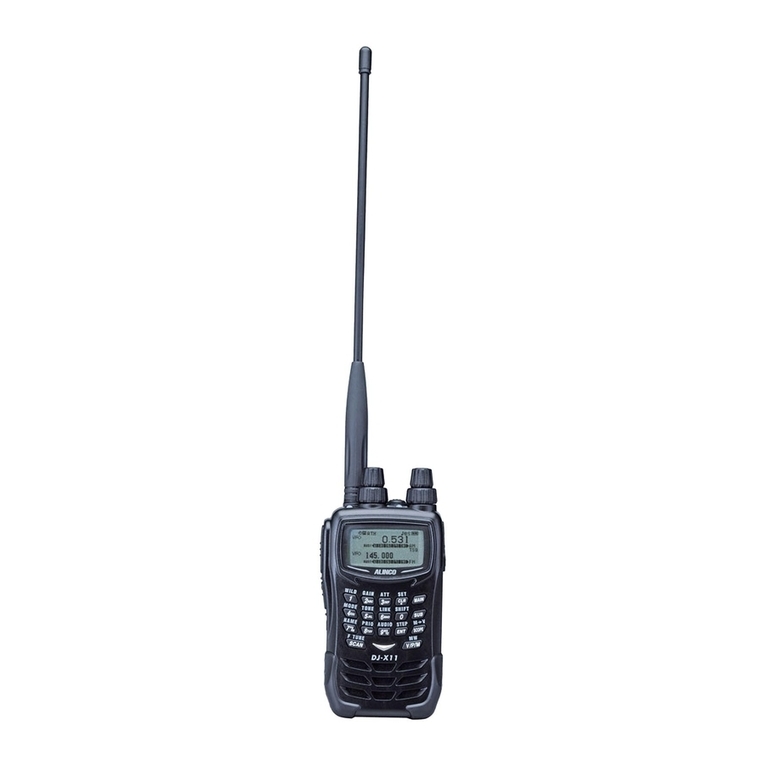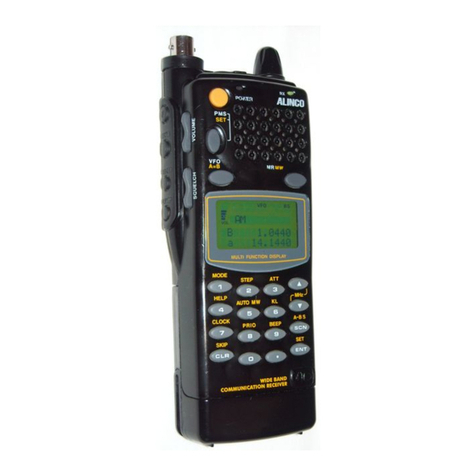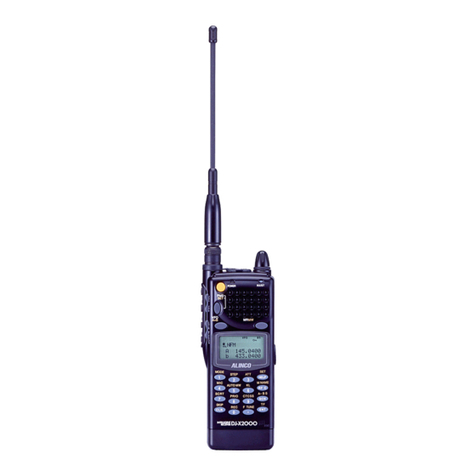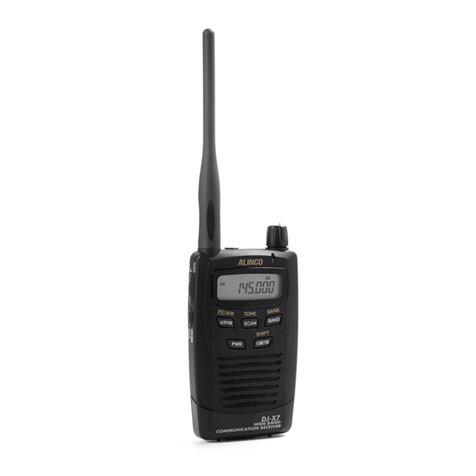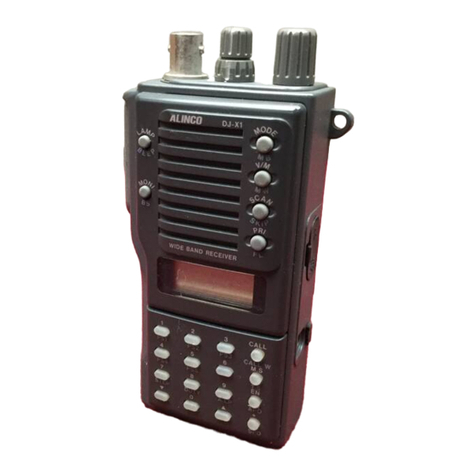5. Squelch Circuit Part of the audio signal from pin 9 of IC104 is amplified by the noise filter
amplifier consisting of R176, R186, R177, C179, C183, C191, and C194,
and the internal noise amplifier in IC104. The desired noise of the signal is
output through pin 11 of IC104, to be further amplified by the noise amplifier
(Q115). The amplified noise signal is rectified by voltage doubler D109 and
input to pin 4 of CPU (IC5).
2) Transmitter System
1. Modulator Circuit The audio signal is converted to an electric signal in either the internal or
external microphone, and input to the microphone amplifier (IC6). IC6
consists of two operational amplifiers; one amplifier (pins 1, 2, and 3) is
composed of pre-emphasis and IDC circuits and the other (pins 5, 6, and 7)
is composed of a splatter filter. The maximum frequency deviation is
obtained by VR2 and input to the cathode of the varicap of the VCO, to
change the electric capacity in the oscillation circuit. This produces the
frequency modulation.
2. Power Amplifier The transmitted signal is oscillated by the VCO, amplified by the pre-drive
Circuit amplifier (Q102) and drive amplifier (Q101), and input to the power module
(IC101). The signal is then amplified by the power module (IC101) and led
to the antenna switch (D101) and low-pass filter (L102, L103, L104, C113,
C107, C116, and C114), where unwanted high harmonic waves are
reduced as needed, and the resulting signal is supplied to the antenna.
3. APC Circuit Part of the transmission power from the low-pass filter is detected by D1Q3,
converted to DC, and then amplified by a differential amplifier. The output
voltage controls the bias voltage from pin 2 of the power module (IC101) to
maintain the transmission power constant.
3) PLL Synthesizer Circuit
1. PLL The dividing ratio is obtained by sending data from the CPU (IC5) to pin 2
and sending clock pulses to pin 3 of the PLL IC (IC102). The oscillated
signal from the VCO is amplified by the buffer (Q117) and input to pin 6 of
IC102. Each programmable divider in IC102 divides the frequency of the
input signal by N according to the frequency data, to generate a
comparison frequency of 5 or 6.25 kHz.
2. Reference Frequency The reference frequency appropriate for the channel steps is obtained by
Circuit dividing the 21,25 MHz reference oscillation ( 101) by 4250 or 3400,
according to the data from the CPU (IC5). When the resulting frequency is
5 kHz, channel steps of 5,10,15, 20, 25, 30, and 50 kHz are used. When
it is 6.25 kHz, the 12.5 kHz channel step is used.

